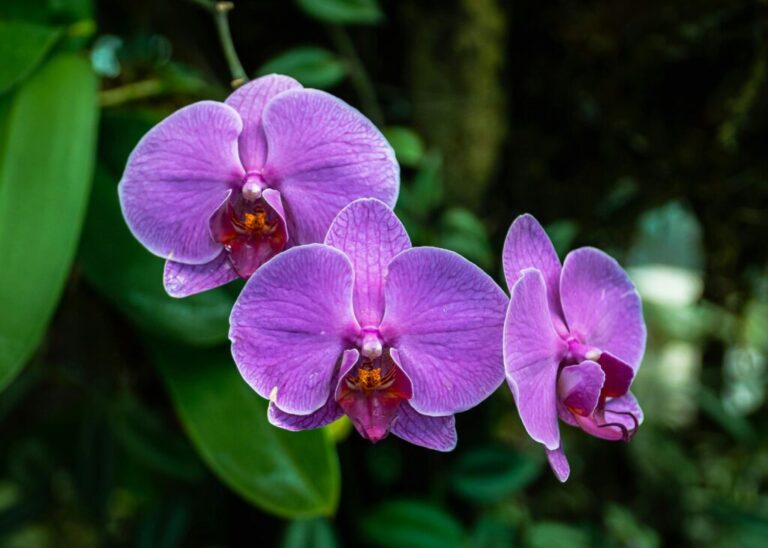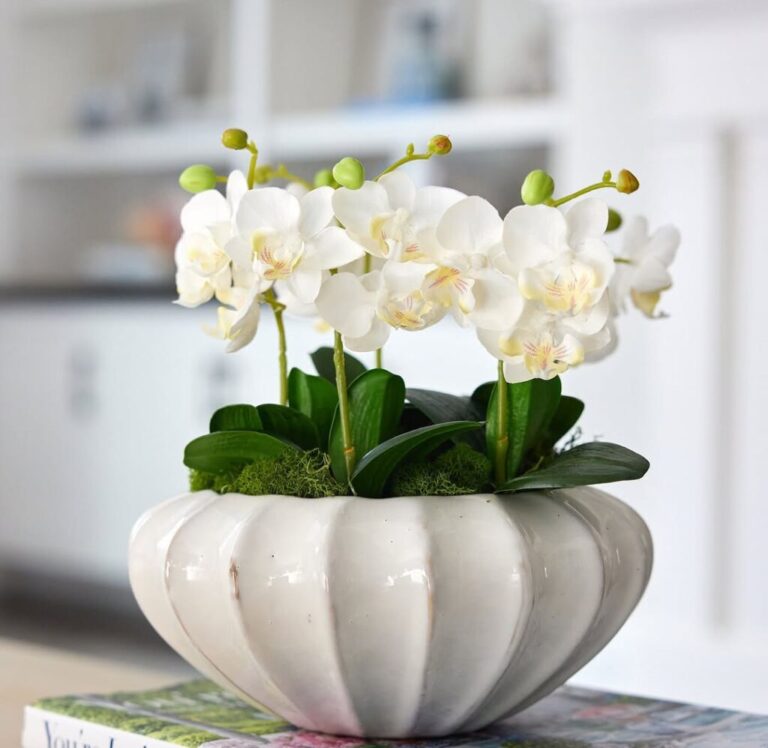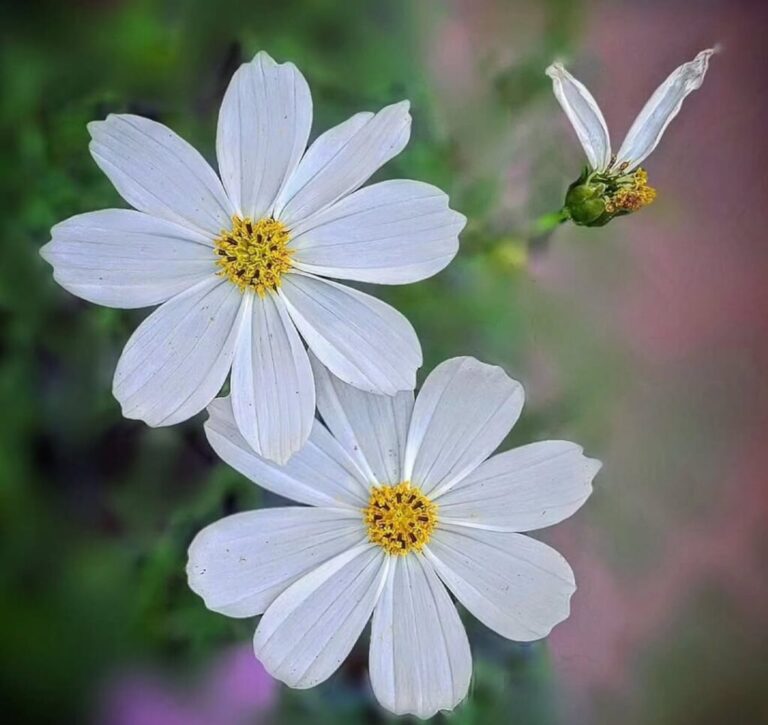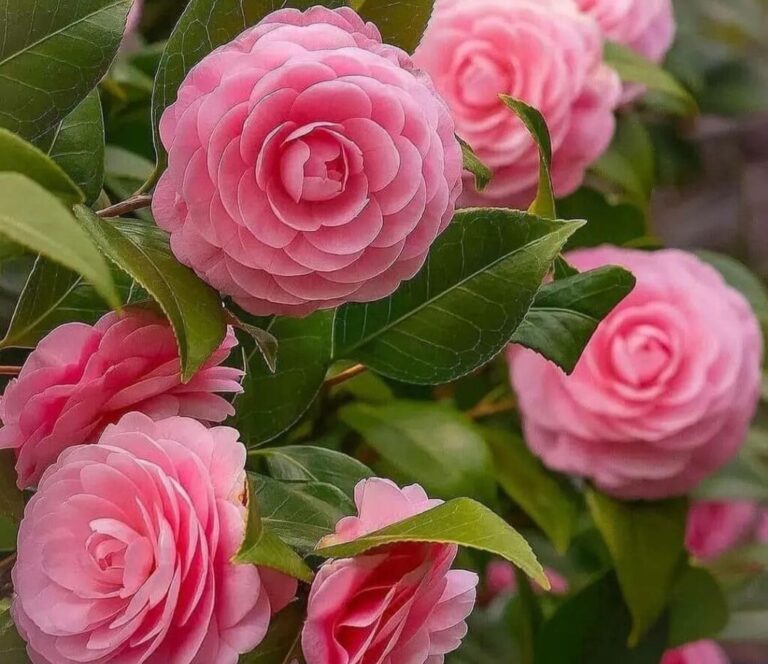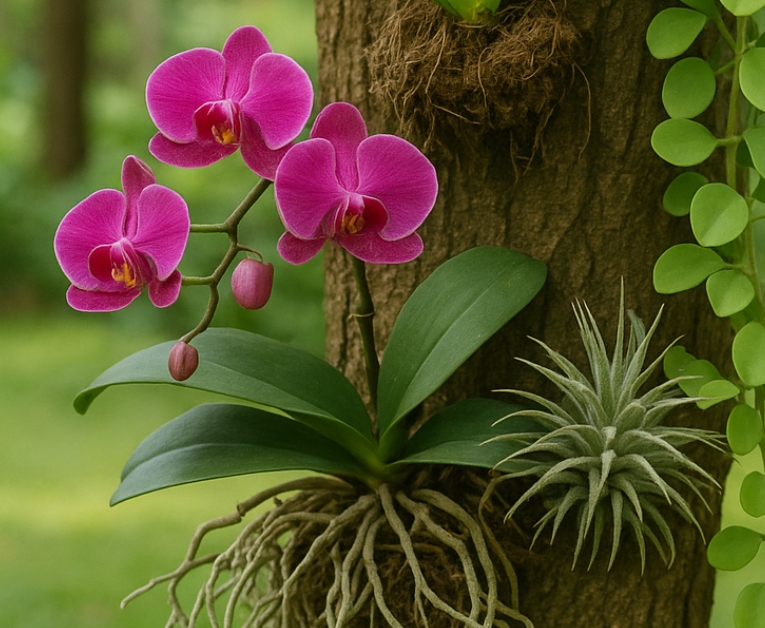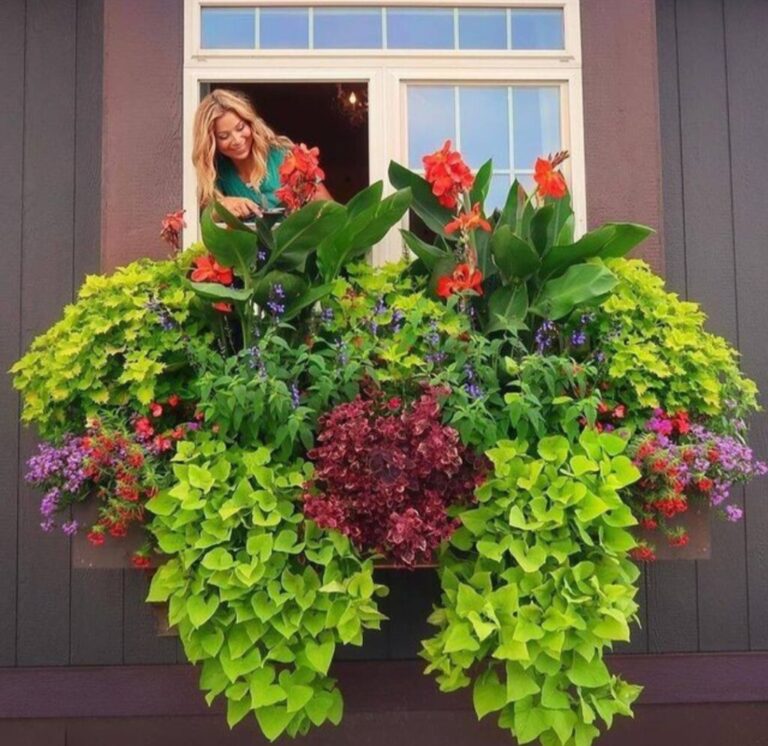Orchids are among the most stunning and rewarding plants to grow, but many beginners struggle to keep them thriving. If you’ve ever wondered how to care for orchids and achieve breathtaking blooms year after year, you’re in the right place! Understanding how to care for orchids is simpler than it seems—all it takes is the right approach. With proper watering, lighting, and a few expert techniques, you can master how to care for orchids like a pro. Whether you’re growing Phalaenopsis, Cattleya, or Dendrobium, knowing how to care for orchids will help you maintain their health and encourage vibrant flowers.
- 1 How to Care for Orchids
- 2 Understanding Different Types of Orchids
- 3 Essential Orchids Care Guidelines
- 4 Mastering Orchid Watering Techniques
- 5 Light Requirements and Placement
- 6 Here are some tips for placing your orchid:
- 7 Selecting the Right Potting Medium
- 8 Temperature and Humidity Management
- 9 Fertilizing Your Orchids
- 10 Troubleshooting Common Orchid Problems
- 11 Conclusion: Growing Success with Your Orchid Collection
- 12 FAQ
How to Care for Orchids
In this guide, we’ll share eleven essential tips on how to care for orchids so they flourish in your home. You’ll learn everything from the best orchid’s care to the perfect humidity levels, ensuring that how to care for orchids becomes second nature. Many people make simple mistakes when learning how to care for orchids, but with these expert-backed techniques, your orchids will thrive. Don’t let orchid care intimidate you—discover how to care for orchids effortlessly and enjoy their stunning beauty year-round.

Our guide will cover the basics and advanced tips for growing orchids. You’ll learn the best practices for i orchids care and various orchid types.
Key Takeaways
Understanding your orchid’s needs is crucial for vibrant blooms
Orchid care involves providing the right conditions for your orchid to thrive
Different orchid types require unique care and attention
orchids care requires attention to detail and a thorough understanding of orchid care principles
Proper orchid care can result in stunning, long-lasting blooms
Understanding Different Types of Orchids
Orchids are incredibly diverse, with over 30,000 known orchid types. Knowing the different types is key when growing indoor orchids. This knowledge helps you care for your orchid properly, ensuring it grows well and blooms beautifully.
Popular indoor orchid varieties include Phalaenopsis, Dendrobium, and Oncidium. Each has its own growth pattern and needs. For instance, Phalaenopsis orchids are great for beginners. They love indoor light and temperatures between 65-75°F (18-24°C).
Phalaenopsis: elegant, long-lasting blooms, moderate light, temperatures between 65-75°F (18-24°C)
Dendrobium: versatile, can grow well in a variety of lighting conditions, suitable for different indoor spaces
Oncidium: known for their small, delicate blooms, require bright light and moderate temperatures
Knowing about the different orchid types helps you care for them better. Whether you’re new or experienced, learning about indoor orchid varieties will make your collection thrive and look stunning.
| Orchid Type | Growth Pattern | Lighting Requirements |
|---|---|---|
| Phalaenopsis | Elegant, long-lasting blooms | Moderate light |
| Dendrobium | Versatile, can grow well in a variety of lighting conditions | Bright to moderate light |
| Oncidium | Small, delicate blooms | Bright light |
Essential Orchids Care Guidelines
When caring for orchids, several key factors are important. Proper orchid care tips include careful watering. Dehydration can result from underwatering, whereas root rot can be caused by overwatering.Regular use of a balanced fertilizer promotes healthy growth and blooming.
Understanding orchid maintenance is crucial for creating a thriving environment. Most orchids need high humidity, between 40-70%, and moderate temperatures. By following these guidelines, you can keep your orchids healthy and encourage blooming.
Watering: Water your orchids carefully, avoiding overwatering and underwatering.
Fertilizing: Use a balanced fertilizer to promote healthy growth and blooming.
Humidity: Maintain a humid environment, typically between 40-70%.
Temperature: Keep your orchids in an area with moderate temperatures.
By following these orchid maintenance guidelines, you can enjoy your orchids’ beauty and fragrance for years. Rememb er to research specific orchids care needs for your type of orchid, as some may have unique requirements.
| Orchid Type | Watering Requirements | Fertilizing Requirements |
|---|---|---|
| Phalaenopsis | Once a week | Balanced fertilizer, once a month |
| Dendrobium | Every 10 days | High-nitrogen fertilizer, every two weeks |
Mastering Orchid Watering Techniques
Orchid watering is key to their care. Knowing about water quality and how often to water is important. Distilled or filtered water is best because it prevents mineral buildup.
The water should be lukewarm. Cold water can shock the roots. Watering frequency changes with the orchid type, humidity, and season. For example, growing seasons need more water, while dormant seasons need less.
Water Quality and Temperature
Water quality is crucial for orchids. Bad water can harm them. Good water promotes growth and blooms. The best water temperature is 65-75°F (18-24°C).
Frequency and Amount
How often and how much to water is vital. Too much water can rot the roots. Too little can stress the plant. Watering frequency depends on the orchid, humidity, and season.
Watering once a week in growing seasons and every 10-14 days in dormant seasons is a good rule. Mastering these techniques ensures your orchids grow well. Always use quality water, check its temperature, and adjust watering based on your orchid and environment.
Light Requirements and Placement
Orchid light is key to their health and blooms. Each orchid type needs different light levels. Knowing these needs helps place orchids right.
For example, Phalaenopsis orchids do well in low to moderate light. This makes them great for indoor spots with little natural light.
Choosing the right indoor light is vital. Some orchids, like Vanda, need full sun to partial shade. Others prefer less light. The right spot can make a big difference in their blooming and health.
For bright light, a south-facing window is best. For lower light, east- or west-facing windows work better.
Here are some tips for placing your orchid:
Place orchids needing lots of light near a south-facing window
Use sheer curtains to filter light for those needing less
Avoid direct sunlight to prevent burning
By knowing your orchid’s light needs and placing it right, you help it grow and bloom well. Keep an eye on how your orchid reacts to its spot. Adjust its placement as needed for the right light.
| Orchid Type | Light Requirements | Optimal Placement |
|---|---|---|
| Phalaenopsis | Low to moderate light | East- or west-facing window |
| Vanda | Full sun to partial shade | South-facing window |
Selecting the Right Potting Medium
The potting medium is key to your orchid’s health. It prevents waterlogged soil and root rot. Most orchids do well in potting mixes made for them.
Types of Orchid Growing Media
Common ingredients in orchid media are sphagnum moss, perlite, and fir bark. These help with drainage and moisture. Choose a mix made for orchids with these ingredients.
When and How to Repot
Repotting is needed every 2-3 years or when the orchid grows too big. Gently remove the plant, trim dead roots, and repot in a new medium. This keeps your orchid healthy.
Container Selection Tips
Choosing the right container is important. Look for one with good drainage holes. A pot that’s too small or too large can harm your orchid. The right pot and medium create a great growing space for your orchid.
| Orchid Type | Potting Medium | Repotting Frequency |
|---|---|---|
| Phalaenopsis | Sphagnum moss and perlite | Every 2-3 years |
| Dendrobium | Fir bark and sphagnum moss | Every 3-4 years |
Temperature and Humidity Management
Orchid temperature and humidity are key to creating a natural environment for your orchid. Most orchids do best in daytime temperatures of 65-75°F (18-24°C). At night, they prefer temperatures 5-10°F (3-6°C) lower. It’s important to keep your orchid away from heating vents, fireplaces, and drafty windows to control the temperature.
Humidity levels for orchids should be between 40-70%. Some orchids need more humid conditions than others. To boost humidity, place the pot on a tray with water and pebbles or use a humidifier. Here are some tips for managing temperature and humidity:
Use a thermometer to monitor the temperature
Place the orchid pot on a tray with water and pebbles to increase humidity
Keep the orchid away from direct sunlight and heating vents
Understanding and managing these factors can greatly impact your orchid’s health and blooming. Proper temperature control and humidity management will help your orchid thrive and bloom beautifully.

Remember, every orchid is unique. It’s crucial to research the specific temperature and humidity needs for your orchid variety. With the right management, you’ll grow a healthy and vibrant orchid.
| Orchid Type | Temperature Range | Humidity Level |
|---|---|---|
| Phalaenopsis | 65-75°F (18-24°C) | 40-60% |
| Dendrobium | 60-70°F (15-21°C) | 50-70% |
Fertilizing Your Orchids
Orchid fertilizers are key for healthy growth and blooms. It’s important to know the types of fertilizers for orchids. A balanced fertilizer, like a 20-20-20 formula, is great for regular use.It contains the same amounts of potassium, phosphorus, and nitrogen.
For orchid nutrition, use a balanced fertilizer once a month. But, during the flowering season, a bloom booster with more phosphorus can help. Also, adjust your feeding schedule with the seasons, as orchids need more nutrients when they’re actively growing.
Types of Orchid Fertilizers
Balanced fertilizers (20-20-20)
Bloom boosters (high in phosphorus)
Orchid-specific fertilizers
Knowing the signs of over-fertilization is crucial. Look out for yellow leaves, burned roots, and too much salt in the potting medium. Using orchid fertilizers correctly helps avoid these problems. Proper nutrition is essential for healthy growth and blooms. With the right fertilizing, your orchids will thrive.
Troubleshooting Common Orchid Problems
Orchids are delicate plants and can face problems even with good care. One common issue is orchid pests like mealybugs, spider mites, and scale.It contains potassium, phosphorus, and nitrogen in equal proportions.It’s key to spot them early to stop infestations.
Orchid diseases like root rot, leaf spot, and crown rot can also occur. These can be avoided by ensuring good air flow, not overwatering, and using clean tools. Regular checks for disease signs can help catch problems early.
Common Orchid Problems and Solutions
Leaf and root problems, like wrinkled leaves or soft roots, often come from watering or nutrient issues.
Pest infestations, such as mealybugs or spider mites, can be treated with insecticidal soap or neem oil.
Diseases, like root rot or leaf spot, can be prevented by ensuring good air circulation and avoiding overwatering.
Knowing about these orchid problems and how to prevent them can keep your orchids healthy. Regular checks and care can prevent issues and help your orchids bloom well.

| Problem | Solution |
|---|---|
| Pest infestation | Insecticidal soap or neem oil |
| Disease | Good air circulation, avoiding overwatering, and using sterile potting tools |
| Leaf and root issues | Adjusting watering schedule and providing proper nutrition |
Conclusion: Growing Success with Your Orchid Collection
Starting your orchid-growing journey is exciting. Success comes from dedication, patience, and a desire to learn. Knowing your orchids’ needs, like watering and lighting, is crucial. This knowledge helps you grow vibrant, lasting blooms.
Every challenge you face makes you better at caring for orchids. Soon, you’ll have a beautiful collection that thrives. Enjoy watching your orchids grow and bloom.
Be proud of your journey and the beauty you create. Following the care tips in this article will help you grow a stunning orchid garden.It will make your house happier and more beautiful.
FAQ
What are the most popular indoor orchid varieties?
Popular indoor orchids include Phalaenopsis, Dendrobium, and Oncidium. Each variety has its own look and growth habits. They fit well in different home settings.
How often should I water my orchids?
Watering frequency depends on the orchid type, humidity, and season. Generally, water once a week or when the soil feels dry. Too much water can harm the roots, while too little stresses the plant.
Which kind of potting medium is ideal for orchids?
Orchids do best in potting mixes made for them. These mixes include sphagnum moss, perlite, and fir bark. They help prevent waterlogged soil and ensure root aeration.
What is the ideal temperature and humidity range for orchids?
Orchids like daytime temperatures of 65-75°F (18-24°C) and cooler nights. Humidity should be 40-70%. Some need more humid air than others.
How often should I fertilize my orchids?
Fertilize orchids once a month with a balanced fertilizer (20-20-20). Use a bloom booster (high in phosphorus) during the flowering season to get more blooms
How can I prevent and manage common orchid pests and diseases?
Use insecticidal soap or neem oil to fight pests like mealybugs, spider mites, and scale. To avoid diseases like root rot and leaf spot, ensure good air flow, don’t overwater, and use clean potting tools.
How to care for orchids indoors?
To care for orchids indoors, provide bright, indirect light, water them sparingly, and ensure good air circulation. A well-draining orchid potting mix and the right humidity levels are also essential for healthy growth.
How to care for orchids to make them bloom again?
To encourage reblooming, place your orchid in a location with consistent light, feed it with a balanced orchid fertilizer, and allow a slight drop in nighttime temperatures. Proper orchid care ensures beautiful blooms year after year.
How to care for orchids after blooming?
After blooming, trim the flower spike, reduce watering slightly, and continue fertilizing. This helps the orchid conserve energy for its next flowering cycle.
How to care for orchids in winter?
Winter orchid care includes reducing watering, maintaining humidity levels around 50-70%, and keeping the plant away from cold drafts. Using a humidifier can help keep orchids healthy during dry winter months.
How to care for orchids with yellow leaves?
Yellow leaves in orchids can be a sign of overwatering, too much direct sunlight, or nutrient deficiencies. Adjust watering habits and relocate the orchid to a spot with indirect light to restore its health.
How to care for orchids with no roots?
If your orchid has lost its roots, try placing it in sphagnum moss or water culture to encourage root regrowth. Using a rooting hormone can also help strengthen new root development.
How to care for orchids in a bathroom?
Orchids thrive in bathroom environments due to high humidity levels. Just ensure they receive sufficient indirect light and good air circulation to prevent rot.
How to care for orchids in a terrarium?
When growing orchids in a terrarium, choose miniature orchid species, provide good ventilation, and avoid excessive moisture buildup. This prevents fungal and bacterial infections.
How to care for orchids in water?
Water culture orchids need their roots submerged for a few days, followed by a drying period. This method requires careful monitoring to prevent rot and maintain proper hydration.
How to care for orchids when going on vacation?
Before leaving, water your orchids thoroughly and place them in a humid environment with indirect light. You can also use self-watering spikes or ask a friend to check on them to prevent dehydration.


